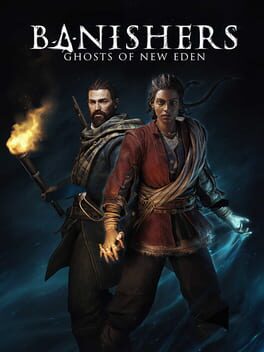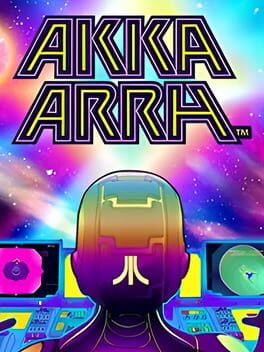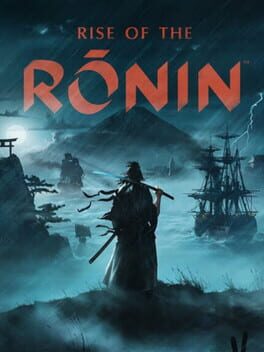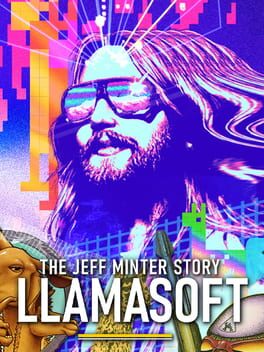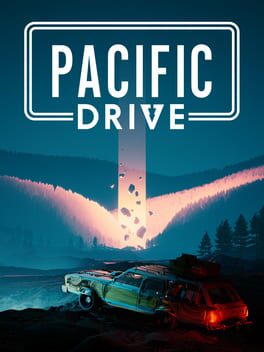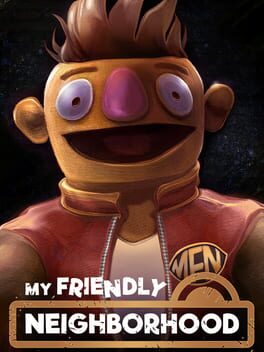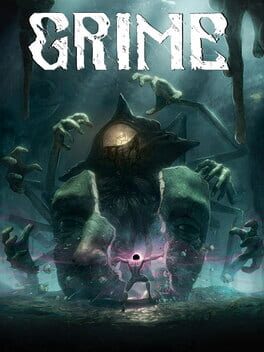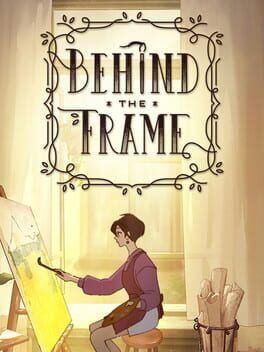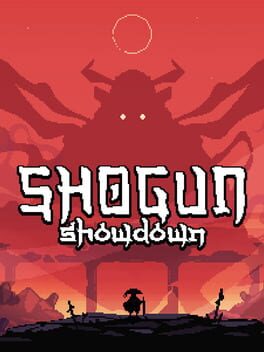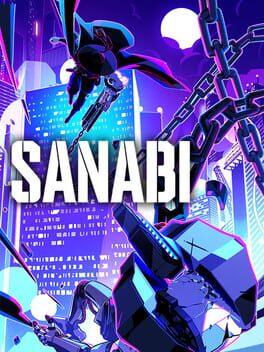mjoshua
2024
Idle games never really click with me because leaving them running can subtly ramp-up my stress levels, and while Rusty’s Retirement does that too, it’s also just so damn delightful that I didn’t mind the little micro dose of anxiety. The absence of handholding is nice, but don’t be like me who wanted more guidance but forgot to check the in-game manual. My favorite part was after I unlocked all the homes and maxed out my tile usage, I handed the reigns to my eight-year-old who lit up like a light show. Great game for all ages!
2024
Animal Well is a genius game that everybody should try. I’ve heard of folks being 35 hours deep and still chasing mysteries, but once I hit credits at hour 8, I felt content to hang up my puzzle solving hat. I am that monstrous individual who didn’t swoon over Zelda: Link To The Past, but if that was your jam, I could see this being a 10/10 for you.
Banishers look and plays like God of War Ragnarok. You’re exploring the wilds with your playable family member (in this case, a ghost spouse), you swap between the strengths of both characters, and everything you do works towards mending your grief using magical ghost-banishing means.
Maybe along the way you absorb the souls of some villagers to put the romance back in necromancy to resurrect your ghost spouse? It’s an option.
The combat lacks punch, but the acting makes up for it with likable protagonists. It’s a peak game from Don’t Nod Entertainment. I just didn’t expect the lore to take me out of it.
When I met the big bad enemy of the game, we hear her classification of ghost is just a “nightmare.” Then we’re told they’re the highest and most difficult kind of ghost to deal with. But I was thinking, “I’ve dealt with those before.” Fizzzzzz: there goes my wider curiosity of this world at large. Still, it kinda sucks to feel that way because this game clearly has tons going for it. Game retired for now. Probably ideal for gamer couples, though.
(Banishers Ghosts of New Eden)
Maybe along the way you absorb the souls of some villagers to put the romance back in necromancy to resurrect your ghost spouse? It’s an option.
The combat lacks punch, but the acting makes up for it with likable protagonists. It’s a peak game from Don’t Nod Entertainment. I just didn’t expect the lore to take me out of it.
When I met the big bad enemy of the game, we hear her classification of ghost is just a “nightmare.” Then we’re told they’re the highest and most difficult kind of ghost to deal with. But I was thinking, “I’ve dealt with those before.” Fizzzzzz: there goes my wider curiosity of this world at large. Still, it kinda sucks to feel that way because this game clearly has tons going for it. Game retired for now. Probably ideal for gamer couples, though.
(Banishers Ghosts of New Eden)
2024
Indika is a masterful video game, though very frequently not-fun. I need to warn about Indika’s content as a religious horror game.
Towards the end, there’s a scene that addresses sexual coercion. Using the garish fade-to-red film technique to address the dehumanization without having to render the details, there’s a point where this game reaches peak narrative horror. This works with the core theme of a deep desire to crawl out your skin in fucked-up religious sort of prison that includes your own worldview. It’s just… forewarning / skip-ability would be good.
It reminds me of a lot of A24’s more recent horror films: the terror keeps things moving, puts us on the edge of our seat and makes is want for the ick to be defeated., The bad situation is the point. None of what’s happening is okay.
The more chill moments also have this air of discomfort. Yaking selfie screenshots of Indika feels a bit like an invasion of privacy. She looks briefly at the camera when you rotate around to see her face, then immediately looks away, trying to avoid the knowing fact that we’re watching her.
Taking selfies of Indika feels a bit like an invasion of privacy. She looks briefly at the camera when you rotate around to see her face, then immediately looks away, trying to avoid the knowing fact that we’re watching her.
The gameplay itself is mostly about trying to get out of your own personal hell. Indika frequently takes control of nightmarish Industrial Revolution era steam machines to seek out that one very-restrictive pathfinding exit. This makes exploration often feel as oppressive as Indika’s guilt-ridden alienation. The reprieve in all of this is a partnership with a man whose arm is infected with sepsis named Ilya. Their friendship book-ends the game and yields the most narrative surprises. I should go into it more, but for now I think I need to call it.
Towards the end, there’s a scene that addresses sexual coercion. Using the garish fade-to-red film technique to address the dehumanization without having to render the details, there’s a point where this game reaches peak narrative horror. This works with the core theme of a deep desire to crawl out your skin in fucked-up religious sort of prison that includes your own worldview. It’s just… forewarning / skip-ability would be good.
It reminds me of a lot of A24’s more recent horror films: the terror keeps things moving, puts us on the edge of our seat and makes is want for the ick to be defeated., The bad situation is the point. None of what’s happening is okay.
The more chill moments also have this air of discomfort. Yaking selfie screenshots of Indika feels a bit like an invasion of privacy. She looks briefly at the camera when you rotate around to see her face, then immediately looks away, trying to avoid the knowing fact that we’re watching her.
Taking selfies of Indika feels a bit like an invasion of privacy. She looks briefly at the camera when you rotate around to see her face, then immediately looks away, trying to avoid the knowing fact that we’re watching her.
The gameplay itself is mostly about trying to get out of your own personal hell. Indika frequently takes control of nightmarish Industrial Revolution era steam machines to seek out that one very-restrictive pathfinding exit. This makes exploration often feel as oppressive as Indika’s guilt-ridden alienation. The reprieve in all of this is a partnership with a man whose arm is infected with sepsis named Ilya. Their friendship book-ends the game and yields the most narrative surprises. I should go into it more, but for now I think I need to call it.
2023
I don’t think I like Akka Ahrr, but I do recommend it.
I came into Llamasoft’s work as very much a twenty-first century American human slightly afraid to get spat upon by the beasties, but also enough of an animal lover and video game fan that I brought a towel. I started extremely intrigued by Christian Donlan’s Eurogamer review that compared Jeff Minter’s creativity style to an oil painting and gave Akka Ahrr five gold stars. Thus christening it Essential, I simply couldn’t ignore the entire Jeff Minter / Llamasoft journey.
So I set out to undo my ignorance and start in 1982 with Digital Eclipses collection, Llamasoft: The Jeff Minter Story. Boy, has it been an enjoyable education, even if all of the games aren’t my jam. Thus, the journey is very recommended: especially pairing both Akka Ahrr and the Jeff Minter Story as a complete experience.
I should say what works and doesn’t work for Akka Ahrr before I sign off. My favorite thing is when I get perfect clarity: know what I need to do and that execution is the only gap needed to cross. Akka Ahrr constantly divides you between an assortment of priorities where the joy comes from discerning the order of importance correctly. With time, I could develop this skill, have my enemy particles driven before me and hear the lamentations of their fragmented pixels. Unfortunately my motivation just isn’t high enough to do so. For the ones who that perfectly scratches their brain itch, I see how it lights up like rainbow gold.
So again, not for me; but I recommend the ride.
I came into Llamasoft’s work as very much a twenty-first century American human slightly afraid to get spat upon by the beasties, but also enough of an animal lover and video game fan that I brought a towel. I started extremely intrigued by Christian Donlan’s Eurogamer review that compared Jeff Minter’s creativity style to an oil painting and gave Akka Ahrr five gold stars. Thus christening it Essential, I simply couldn’t ignore the entire Jeff Minter / Llamasoft journey.
So I set out to undo my ignorance and start in 1982 with Digital Eclipses collection, Llamasoft: The Jeff Minter Story. Boy, has it been an enjoyable education, even if all of the games aren’t my jam. Thus, the journey is very recommended: especially pairing both Akka Ahrr and the Jeff Minter Story as a complete experience.
I should say what works and doesn’t work for Akka Ahrr before I sign off. My favorite thing is when I get perfect clarity: know what I need to do and that execution is the only gap needed to cross. Akka Ahrr constantly divides you between an assortment of priorities where the joy comes from discerning the order of importance correctly. With time, I could develop this skill, have my enemy particles driven before me and hear the lamentations of their fragmented pixels. Unfortunately my motivation just isn’t high enough to do so. For the ones who that perfectly scratches their brain itch, I see how it lights up like rainbow gold.
So again, not for me; but I recommend the ride.
2024
I loved this game at times, was burnt out at others, and somehow saved all one hundred cats. The storytelling was almost entirely skippable, but the combat was so relentlessly enjoyable, that I almost didn’t mind that this consumed sixty hours of my life. But ultimately I was very done well before I hit credits because the pacing was over-extended, making the whole experience feel like a phenomenal thirty hour experience was underneath one twice as long. I’ve loved Team Ninja’s last five games, so I know they tend to be a little bloated. But this one lacked some special sauce beyond the pseudo-historical tourism.
I adored this, but I’m gonna dunk on it because I desire more out of Digital Eclipse’s interactive documentaries in the future. Also, this form of interactive documentaries mixed with video game museums are absolutely the future and I hope there’s hundreds of them years from now.
So yeah, Llamasoft’s history is over forty-two years long, but this thing spends 95% of its documentation efforts in those first seven years. Then, right as things start getting challenging and difficult for Jeff, we get a last flash of light in 91 as Jeff finds a life raft with shareware. Then another highlight in 1994 with his Tempest update on the Atari Jaguar. And by then it’s like Digital Eclipse ran out of runway on this whole story.
Then we see a video introducing Llamasoft’s second team member before the whole last thirty years are flown-through like nothing important happened in that time. There’s some brief callouts, but as a whole documentary, this thing eludes the dramatic tension; then drops the dang ball.
I bought this in tandem with Llamasoft’s newest game, Akka Ahrr, thinking this doc would give me the full context leading up to the studio’s latest. Instead, it felt like I got an appetizer — and desert — with no entre. I still don't know exactly how Akka Ahrr fits in the history exactly, but I guess that's what Wikipedia is for.
,
It’s clear that most of the games in this collection feel rather displaced by the span of thirty plus years , but it still feels like a treasure trove of discoveries as I worked my way through them all. It’s magical and delightful and also a little insanely unstructured. I recommend it and I’ll be hopping into Digital Eclipse’s prior releases soon!
So yeah, Llamasoft’s history is over forty-two years long, but this thing spends 95% of its documentation efforts in those first seven years. Then, right as things start getting challenging and difficult for Jeff, we get a last flash of light in 91 as Jeff finds a life raft with shareware. Then another highlight in 1994 with his Tempest update on the Atari Jaguar. And by then it’s like Digital Eclipse ran out of runway on this whole story.
Then we see a video introducing Llamasoft’s second team member before the whole last thirty years are flown-through like nothing important happened in that time. There’s some brief callouts, but as a whole documentary, this thing eludes the dramatic tension; then drops the dang ball.
I bought this in tandem with Llamasoft’s newest game, Akka Ahrr, thinking this doc would give me the full context leading up to the studio’s latest. Instead, it felt like I got an appetizer — and desert — with no entre. I still don't know exactly how Akka Ahrr fits in the history exactly, but I guess that's what Wikipedia is for.
,
It’s clear that most of the games in this collection feel rather displaced by the span of thirty plus years , but it still feels like a treasure trove of discoveries as I worked my way through them all. It’s magical and delightful and also a little insanely unstructured. I recommend it and I’ll be hopping into Digital Eclipse’s prior releases soon!
2024
I knew I’d dig Pacific Drive, but I didn’t expect the car maintenance to become my favorite part of it — or for it to keep me invested for nearly thirty hours.
My play style in games like this is to play the janitor: grabbing everything not bolted down and tossing it in my sack. That served me very well for the incredibly robust crafting system, amassing a large tool shed of doo-dads. Unfortunately, I think it also kept me too far ahead of this game’s best moments where everything is going wrong and you have to be like Matt Damon in The Martian to “science the hell” out of the problem, crafting the essentials to keep you going.
It pays to pay more attention to the details than I did: figure out where to find what kinds of resources and just grab what you need to have the best freeform experience. If you’re an anxious little thing like me, you might burn yourself out a bit on stopping for resources too often and losing momentum on some of the more grand objectives. As with any immersive RPG like this, it’s a dance between what you need to do versus trying to do everything. Finding that balance makes for the best trip.
Just like the best immersive sim games, there’s a tradeoff for the endgame that you either end up having the final mission that tests you in every lesson you learned — or lets go of the gas and lets you walk through a shoegazey reflection. This one fixes eyes to shoelaces, where I maybe wanted to really show-off, but it might be best for a game about driving to have at least one joyride.
My play style in games like this is to play the janitor: grabbing everything not bolted down and tossing it in my sack. That served me very well for the incredibly robust crafting system, amassing a large tool shed of doo-dads. Unfortunately, I think it also kept me too far ahead of this game’s best moments where everything is going wrong and you have to be like Matt Damon in The Martian to “science the hell” out of the problem, crafting the essentials to keep you going.
It pays to pay more attention to the details than I did: figure out where to find what kinds of resources and just grab what you need to have the best freeform experience. If you’re an anxious little thing like me, you might burn yourself out a bit on stopping for resources too often and losing momentum on some of the more grand objectives. As with any immersive RPG like this, it’s a dance between what you need to do versus trying to do everything. Finding that balance makes for the best trip.
Just like the best immersive sim games, there’s a tradeoff for the endgame that you either end up having the final mission that tests you in every lesson you learned — or lets go of the gas and lets you walk through a shoegazey reflection. This one fixes eyes to shoelaces, where I maybe wanted to really show-off, but it might be best for a game about driving to have at least one joyride.
I was surprised by My Friendly Neighborhood: delighted to find an array of tightly-designed classic survival-horror systems that knocked me on my ass more than thrice. The attention to design detail took me back to the likes of Code Veronica, where Resident Evil placed a slightly higher priority on puzzle solving and multi-complex backtracking.
Played on the Survival difficulty — one step above normal — I found this precise level design that delivered a perfect blend of exploring every nook for ammo, piecing-together puzzles across the interlinking map, and the careful resource management of combat scenarios (where you ask if it’s better to shoot or run). I even got that sort of perverse-joy when I died after not saving for nearly an hour. Like, “Alright, let’s go!” Of course, I proceeded to make that same mistake a few more times at different intervals in a way that managed to elongate my five-hour run into nine hours, but I was happy (and very tense).
The Neighborhood might not make everybody want to be a neighbor, but the precise love for the “behind the scenes of Sesame Street” evoked a deep sense of affection for this lifelong Muppet fan. Each set piece evoked a unique sense of time and place just outside the margins of some of my oldest memories. It’s unlike anything I’ve played in another mascot horror game — or any other game at all. It’s not quite gonna earn a ton of nine-out-of-ten scores from most critics, but I think Destructoid got it right when they gave it an eight-point-five.
Played on the Survival difficulty — one step above normal — I found this precise level design that delivered a perfect blend of exploring every nook for ammo, piecing-together puzzles across the interlinking map, and the careful resource management of combat scenarios (where you ask if it’s better to shoot or run). I even got that sort of perverse-joy when I died after not saving for nearly an hour. Like, “Alright, let’s go!” Of course, I proceeded to make that same mistake a few more times at different intervals in a way that managed to elongate my five-hour run into nine hours, but I was happy (and very tense).
The Neighborhood might not make everybody want to be a neighbor, but the precise love for the “behind the scenes of Sesame Street” evoked a deep sense of affection for this lifelong Muppet fan. Each set piece evoked a unique sense of time and place just outside the margins of some of my oldest memories. It’s unlike anything I’ve played in another mascot horror game — or any other game at all. It’s not quite gonna earn a ton of nine-out-of-ten scores from most critics, but I think Destructoid got it right when they gave it an eight-point-five.
2024
I love-hated Ultros and I do-don’t recommend it. Like as a love child of two visionaries, it’s a perfect game for your shelf; and probably worth having the physical edition purely for how it draws the eye and stands-out in a sea of similar looking games. On the other hand, it’s got some of the worst gamefeel of any metroidvania I’ve played in a while, often leaving me disoriented, confused, and unclear if I’m supposed to be banging my head against some spinning spikes or… something else? At least the shitty tools the game gives you are uniquely unlike other unlock able in games like it. So, yeah, it’s kind of a bad time, but also a part of an uncharted alien timeloop inside the guts of a space uterus / sarcophagus that I couldn’t say no to.
Making friends and growing together is kinda my favorite — both in real life and videogames. So being able to spend a month doing that in a really excellent RPG is something I kinda wanna shout about from the rooftops. Like A Dragon: Infinite Wealth is my first real foray into the Yakuza game series. I was expecting to enjoy it; just wasn’t expecting it to become one of my all-time favorite RPGs. Just, wow. These characters are so emotionally rich: well-worth spending time with.
Infinite Wealth’s combat dramatically improves everything about standard turn-based JRPG combat by adding just a dash of tactical awareness. Also the ultimate moves in this game are sometimes non-stop hilarity: especially when you can use “Essence of Extreme Bondage” on a Nicotine Lich. Honestly I was glad the final boss was too hard and I needed to go grind a bit and really make sure I had every detail of the systems pat.
I need to harp-on how emotionally intelligent this game is (despite how dumb Ichiban can be). There’s something deeply rewarding about goofy characters who just don’t give up on people even when they’re at their worst. I never saw a ton of the wealth the title talks about, but the heartfelt care was infinitely rewarding.
Infinite Wealth’s combat dramatically improves everything about standard turn-based JRPG combat by adding just a dash of tactical awareness. Also the ultimate moves in this game are sometimes non-stop hilarity: especially when you can use “Essence of Extreme Bondage” on a Nicotine Lich. Honestly I was glad the final boss was too hard and I needed to go grind a bit and really make sure I had every detail of the systems pat.
I need to harp-on how emotionally intelligent this game is (despite how dumb Ichiban can be). There’s something deeply rewarding about goofy characters who just don’t give up on people even when they’re at their worst. I never saw a ton of the wealth the title talks about, but the heartfelt care was infinitely rewarding.
2021
A uniquely imaginative nightmare with familiar souls-vania systems. Art direction does most of the lifting here, but in a wonderfully-affecting way.
Took a bit to click, but completely consumed me with a weighty sense of dread and wonder. I didn’t feel motivated to 100% the map like I do with the best of the best in metroidvanias, but I can confirm it as a remarkable entry in the genre. Some of the second-bar boss phases feel unwelcome at first, but offer an interesting icing-on-the-cake layer to the challenge.
A relieving finish.
Took a bit to click, but completely consumed me with a weighty sense of dread and wonder. I didn’t feel motivated to 100% the map like I do with the best of the best in metroidvanias, but I can confirm it as a remarkable entry in the genre. Some of the second-bar boss phases feel unwelcome at first, but offer an interesting icing-on-the-cake layer to the challenge.
A relieving finish.
2023
I can’t stop playing for more than a few days. Since the first major update, I’m constantly finding new combinations and objectives to try. Still haven’t even tried Day 4 yet because it’s so fun trying to get new tools to try for the four characters. I’ll probably update this review when I spend another 40hrs with it.
2022
Wheeeee...STORYYYYYYY...whee...STORYYYYY...wheeee...STORYYYYYYYYYYYYYY. This describes the gameplay loop and why I was ANNOYED for the first two-thirds of the game. Then, in the last third of the game, the story-balls started landing one after the other. Plus, the gameplay went from slick-but-unchallenging to just plain slick.
Narratively, Sanabi went from feeling super wrote to having one of the best bait-and-switch landings that I've found in memory. I still think the script could be pared-down by 25%, but then I don't know that I'd edit much at all from the deeply affecting conclusion.
It never got quite as hard as I wanted, but I also ended the game in awe and tears. So I might return and clean-up the last three achievements. If you go in, expect the first two thirds of the game to be underwhelming, but to have the best time in the last act.
Narratively, Sanabi went from feeling super wrote to having one of the best bait-and-switch landings that I've found in memory. I still think the script could be pared-down by 25%, but then I don't know that I'd edit much at all from the deeply affecting conclusion.
It never got quite as hard as I wanted, but I also ended the game in awe and tears. So I might return and clean-up the last three achievements. If you go in, expect the first two thirds of the game to be underwhelming, but to have the best time in the last act.


